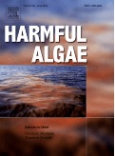Are there species-specific tolerances towards cyanobacteria in Daphnia?
Are there species-specific tolerances towards cyanobacteria in Daphnia?
Cyanobacterial blooms have been a growing environmental concern due to their ability to produce toxins. Yet to date, few studies have focused on comparing the effects of different cyanobacteria. In this publication, we determined the effects of six common cyanobacteria on two keystone species in the aquatic environment, Daphnia magna and Daphnia pulex. Sensitivity depended upon the concentration of the cyanobacteria and differed between the Daphnia species. The publication of this paper coincided with the recent webinar organised by US EPA on cyanobacterial blooms as well as the approval of president Obama to sign the bill on research on toxic algae, both indicating the need for research on cyanobacterial blooms. Our paper concluded by highlighting the importance of concentration response curves to evaluate the toxicity of cyanobacteria to multiple zooplankton species in the environmental risk assessment.
Scientific abstract
Cyanobacteria have become an important environmental concern due to their ability to produce a wide range of natural toxins. At present, very few studies describe concentration response curves for cyanobacteria other than Microcystis. However, field evidence highlights that both cyanobacterial concentration as well as cyanobacterial species composition vary considerably with season and year. Therefore, the aim of this study was to investigate the effects of different cyanobacteria at various concentrations of these cyanobacteria in the diet on the reproduction of Daphnia pulex and Daphnia magna. Those two species were chosen to assess whether the cyanobacteria-daphnid dynamics could be generalized for the Daphnia genus. Results demonstrated that both slope and EC50 of the concentration response curves depend upon the Daphnia species, the cyanobacteria species and the potential interaction between the two. This has two major consequences. First, the differences in sensitivity to cyanobacteria between D. magna and D. pulex depend upon concentration of the specific cyanobacteria. Second, we noted different mechanisms of toxicity for the two zooplankton species, a more general mechanism of toxicity for D. pulex and a more specific one for D. magna. Our data therefore suggest that results of studies investigating effects of cyanobacteria at different concentrations cannot be generalized across species. Furthermore, mechanisms of toxicity are not only cyanobacteria specific, but also dependent on the exposed species, even for rather closely related species such as in the Daphnia genus. Whenever possible, we therefore propose to combine a multi-species approach together with a full concentration response analysis to reach more general conclusions concerning the effects of cyanobacteria on zooplankton.
Full reference
Asselman J, Hochmuth JD, De Schamphelaere KAC (2014). A comparison of the sensitivities of Daphnia magna and Daphnia pulex to six different cyanobacteria. Harmful Algae 38: 1-7. DOI: 10.1016/j.hal.2014.06.008

